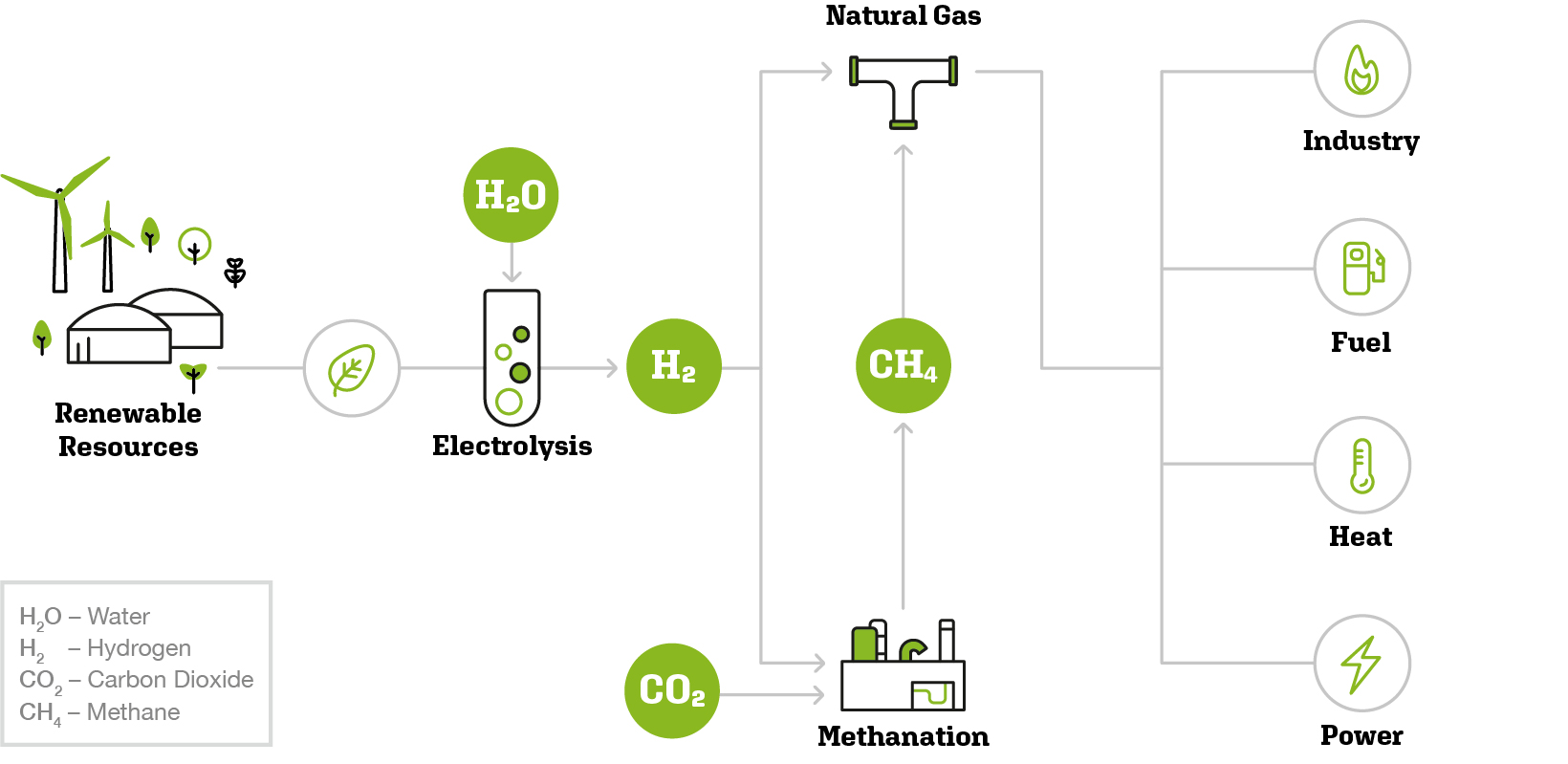In power-to-gas plants, hydrogen is produced from water by electrolysis, using excess electricity from solar and wind energy. The hydrogen can either be used directly or in a second step, converted into biomethane using renewably-produced carbon dioxide. This is called bio-SNG (Synthetic Natural Gas) due to its synthetic production method. The green gases generated by Power-to-Gas can be fed into existing network infrastructures and stored permanently.











